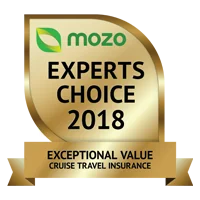History of South Africa
Extras
History of South Africa

Brief History of South Africa
South Africa was first discovered by Europeans in 1488 when Portuguese navigators stopped by the continent on their way back to Europe from Southern India. They erected three crosses and stone pillars on the Eastern Coast of South Africa, it’s the country’s oldest European monument. The Portuguese had famed armadas and would sail back and forth between India and Europe collecting spices to bring home, this was around the spice boom period. Spices were highly prized in the middle-ages, we take them for granted today. Eating broiled meat without any flavouring can drive one to cross an ocean in search of a higher flavour, and that was the case in 1488. Sometimes flavouring is used to disguise the fact that the quality of food is lacking, particularly in some overseas countries.
Scientists believe and have extensive evidence to suggest that South Africa has been the home of our modern human ancestors for well over 100,000 years. Before that, the last 2.5 million years to be exact, it was the home of Australopithecines and numerous other Hominids species.
Before European arrival, South Africa had a large and varied native population, hence the name ‘Rainbow Nation’. There were San Bushmen, Khoisan peoples, Buntu peoples… then finally the Europeans arrived, bringing with them the usual wave of colonisation and pestilence. The first slave ships arrived in 1658. Though most slaves were taken to America’s from Western Africa, slaves weren’t taken not from the Cape but rather were brought to the cape to help establish a colony. As colonists pushed further from the Cape and into the hinterland, the Boers, Afrikaans for ‘farmer’, they strayed from Dutch supervision. The European population in South Africa increased, and so too did their need for provisions and supplies, taking more of the local African population into their stead as servants/slaves. The Europeans also introduced smallpox which decimated native populations, including that of the Khoisan. .
During the 18th century, French factions within the Dutch empire caused a revolt and for the Dutch stadtholder to flee to England. The revolutionaries then declared their own Batavian Republic which was closely aligned with French Napoleonic interests. It was during this time that the British seized the Cape, so that it wouldn’t fall into French hands during the revolutionary wars. The British then relinquished control of the Cape back to the Dutch in 1803. After the Napoleonic Wars, the British inherited the Cape in 1806 and British sovereignty was officially recognized. The British went on to outlaw the Dutch language, replacing it with English, to spread British influence. They even encouraged 5,000 settlers from Great Britain to move to the Cape, who eventually settled in Port Elizabeth and Grahamstown.
The British would fight wars with the Zulu people, a warrior people, and would eventually annex the greater Zulu nation after many bloody battles. In the mid-1800’s the discovery of diamonds would bring great wealth and prosperity to colonial South Africa. By the 1880s, they were producing 95% of the world’s diamonds. This contributed greatly to the ‘scramble for Africa’, wherein the early 20th century, great European powers scrambled to draw up borders around Africa. The discovery of gold in the late 19th century also urged more colonial powers onto the southern-African continent. The early 20th century also brought about the two Anglo-Boer wars between the Boers and the British.
During WW1 and WW2 South Africa supported the British Empire and the Allies in their fight against Axis powers. It was during the post-WW2 era that the period of racial segregation continued, known as the apartheid era. During this time, native Africans were ejected from where they lived and were required to go back to their homelands, or Bantustans. Apartheid was recognized by the U.N as a crime against humanity in 1966, and trade embargos were enforced. In 1990, Nelson Mandela was released from prison, in 1994 South Africa held a general election and Mandela was elected president of South Africa.
In the last twenty years crime in South Africa has skyrocketed, with some cities in the country regularly ranking on dangerous cities lists. Racial tensions in South Africa are also quite high.
Places in South Africa
Below are some of the places you might visit in South Africa:
Johannesburg
South Africa’s capital and economic city, Johannesburg is a must visit. Though it’s come under scrutiny for being a dangerous city if you take measures and be aware you should be fine.
Visit the Cape Vinelands
A lot of South Africa’s vineyards are situated in the Boland Basin, which is north-east of Cape Town. This is a good place for couples and honeymooners to go, as the vineyards hold several quality restaurants and is known for its romantic scenery.
Hermanus
Located on the southern shores of the country, Hermanus is known for its fantastic whale watching. You can even take a whale watching boat out onto the ocean.
Drive to Durban
Durban is South Africa’s second most populous city and is quite close to Johannesburg. It’s a popular tourist destination for South African’s. Durban is a very cultural city, and a city with some great beaches. You’ll see Mosques, Zulu art, colonial architecture, and Hindu Temples. Durban’s a great place to go surfing as well.
Garden Route
The Garden Route is a long and scenic drive that stretches along the South-Eastern shore of the country. It is so named for its dense and floral vegetation which grows along the length of the road.
Drakensburg
The Drakensburg is a glorious mountainous region that forms a cliff-barrier between South Africa and Lesotho. Drakensburg is reminiscent of a fantasy realm and is a must-see for anyone travelling to South Africa.
Back to South Africa travel insurance page.
Before choosing a policy, please be aware that terms and conditions, exclusions, limits and/or sub-limits will apply to most sections. It is important to read the Product Disclosure Statement (PDS) before making any purchase to ensure the cover provided matches your specific requirements.







